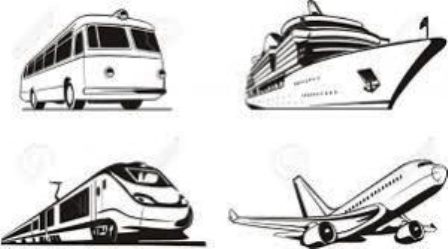Transportation System in Nigeria: Old & Modern Forms
The transportation system in Nigeria has seen a rapid development from the colonial times to the present day. Since the advancement of modern technology, means of transportation in Nigeria has also improved a great deal, thereby facilitating easy movement of goods and persons from one place to the other.

In a highly populated country like Nigeria, there is need for infrastructural development especially in the transport sector. It was the oil boom of 1973, that was one of the major factors that saw the improvement not only on transportation in Nigeria, but on the other sectors that helped diversify the economy.
In the old times, the means of transportation in Nigeria available was by land while other means of transportation through air and water was not prevalent. Although, horses and cars were in existence, people who could not afford to travel by car or by horse, use their pair of foot. It was only those who were rich that could afford to buy horses and cars for transportation in Nigeria.
As time passed, the use of bicycles as a form of transportation system surfaced in Nigeria, people could afford it which made movement easy rather than using of feet. Now, with the help of western tech, sophisticated forms of transportation like cars, trains, Airplanes, boats and ships are now being used to make movement/mobility of persons from one place to the other easy.
Below is a list of various forms of transportation in Nigeria currently
1. Train
The railways in Nigeria links different states and parts of the country together. It was after the emergence of bicycles that railways were created by the colonial masters as a major means or form of transportation in Nigeria. We have railways from Lagos to Kano and from Kano to Enugu. Presently, the railway and its trains are still functional in Nigeria and the corporation that sees or manages the railway transport system in Nigeria is the Nigerian Railway Corporation.
Thanks to the federal government under the Goodluck Administration, new trains were bought and the railway system improved which is currently maintained by this administration. The railway covers about 3,984 kilometers of tracks. There is the western rail line and the eastern rail line. The western rail line connects both Lagos and Nguru together. The eastern rail line, on the other hand, connects Maiduguri to Port Harcourt. The Lagos-Kano Standard Gauge railway is also another rail line in Nigeria.
2. Automobiles and Cars
This is also another form of transportation in Nigeria. Although, when it first came into Nigeria, not many could afford it unlike today, where there are hundreds of cars plying the various roads in Nigeria. The body in charge of managing Nigerian roads is the Federal Road Maintenance Agency (FERMA). In Nigeria, there are federal roads and state roads too.
3. Ships and Boats
Apart from using foot, boats were also the oldest means of transportation in Nigeria. If you go to the riverine areas in Nigeria like Benue, Nigeria Rivers and other places, you will notice that the use of boats in these areas. Today, the use of ships and ferries have surfaced on Nigeria waterways.
In most countries, the use of ships is also common as goods, especially containers can be moved from one country to the other easily. This form of transportation system in Nigeria is also the slowest as it might take months or weeks to move from one place to the other.
4. Airplanes
Airplanes is also on the list of form of transportation used in Nigeria. With the number of airports in Nigeria increasing in a rapid rate, Airline operators have made it easy to move from one place to the other through the air. The number of airplanes found in Nigeria today are now much compared to the past when it was not feasible. Also, there are rich billionaires in Nigeria who own private jets for easy mobility.